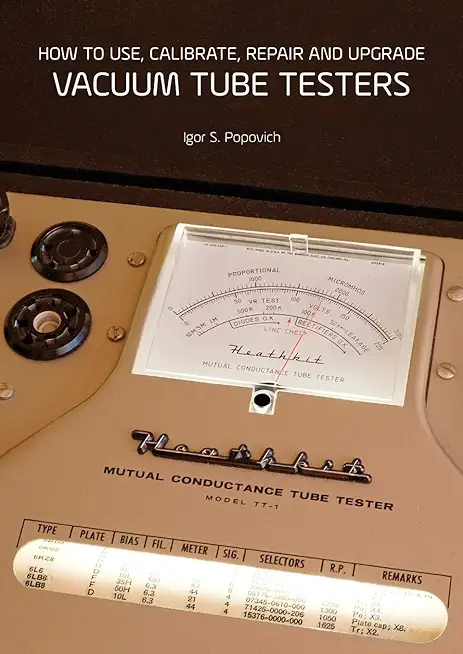
The revival of tube technology in guitar and audiophile amplifiers has also led to the renewed interest in vacuum tube testers and their ultimate purpose, testing and matching of audio tubes. The prices of vintage tube testers have risen to levels unimaginable just a few years earlier. Tube testers their owners could not give away then are now fetching many hundreds and some even thousands of dollars.
Due to high prices of both NOS and currently produced tubes, audiophiles and guitar players want to test & match their own tubes to make sure they've got what the sellers promised, and to see if their old tubes needed replacing in the first place.
If you are a technician who fixes amps or tube seller, then a reliable and accurate tube tester will be beneficial to your business and will improve your bottom line. Declared results of meaningful tests will help you get a higher price for your tubes and repair or tube matching services.
Tube testers and tube testing are so misunderstood that buying a wrong tube tester, using it to do things it was never designed to do, damaging or even destroying tubes it was supposed to test, are just some of the consequences of such ignorance, myths and misconceptions.
Tube testers suffer from false positives and false negatives. A false positive is when a perfectly good tube is tested as "faulty", "worn" or "marginal" and discarded. The false negative is when a faulty tube is passed by a tube tester as a healthy one, and, as a result, an expensive repair is likely if a faulty tube causes secondary faults in the actual equipment such as tube amplifier.
Just like cars, some tube testers look good but aren't that easy or pleasurable to use, others look old fashioned or complicated, but are quite accurate and capable. Some brands and models are overpriced, others are under-appreciated and thus cheaper than they should be.
One aim of this unique book is to identify strengths and weaknesses of various types or families of tube testers in a general sense, and positive and negative aspects of many specific models that often come up for sale.
Design, functionality, calibration and modifications of testers by B&K, Hickok, Triplett, Mercury, Sencore, Weston, Simpson, AVO, Taylor, RCA, Precise, Precision, Eico, Jackson, Sylvania, Knight, Heathkit, Seco, Sico, Conar, Metrix and other brands are discussed.
This practical technical manual is richly illustrated with photographs of inside and outside views of tube testers, their circuit diagrams and various graphs and charts.
Who is this book for?
- Buyers and sellers of vacuum tubes
- DIY constructors who want to build, service or modify tube amps
- Audiophiles and guitar players who want to match their own tubes
- Technicians and engineers who want to expand their knowledge of tubes and tube testers
- Anyone who wants to learn how to use, calibrate, repair and upgrade tube testers
member goods
listens & views

BLUES THE WHOLE BLUES & ...
by BLUES THE WHOLE BLUES AND NOTHING BUT THE BLUES 42 B
COMPACT DISCout of stock
$27.99






